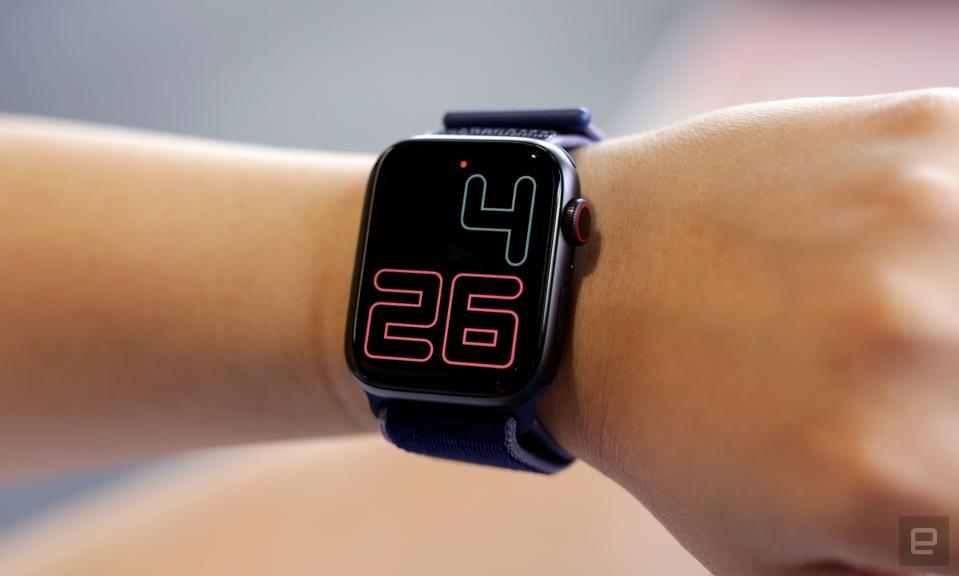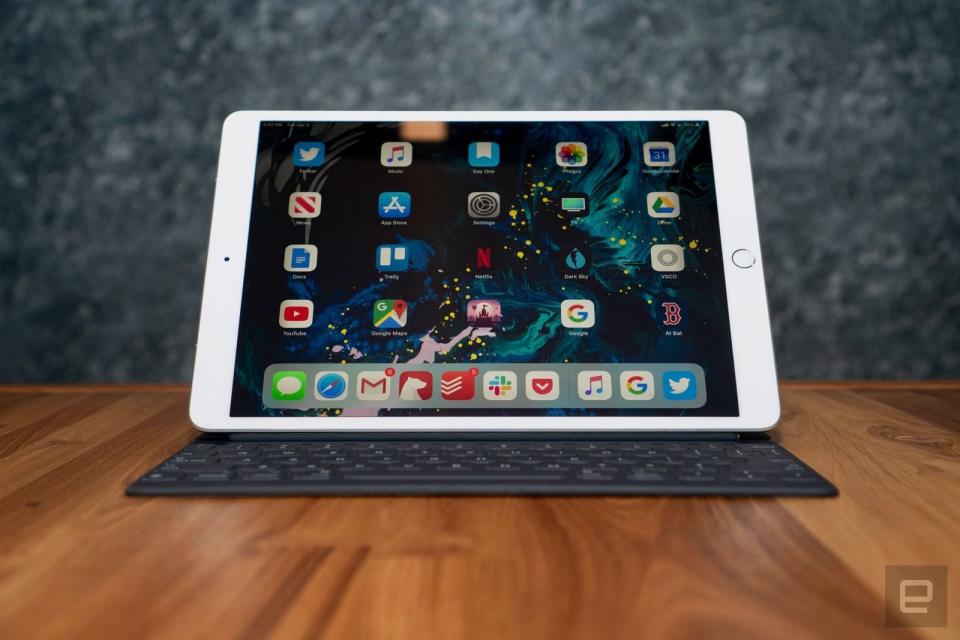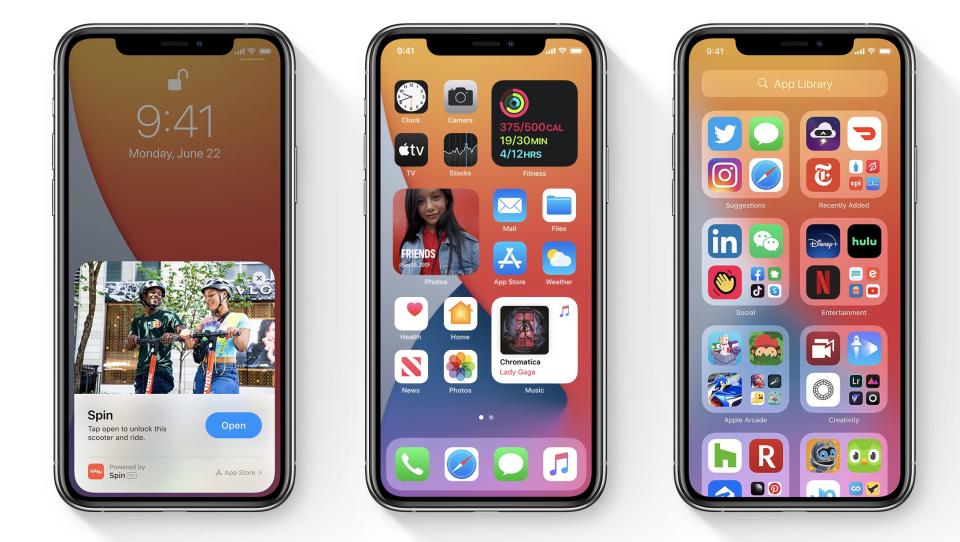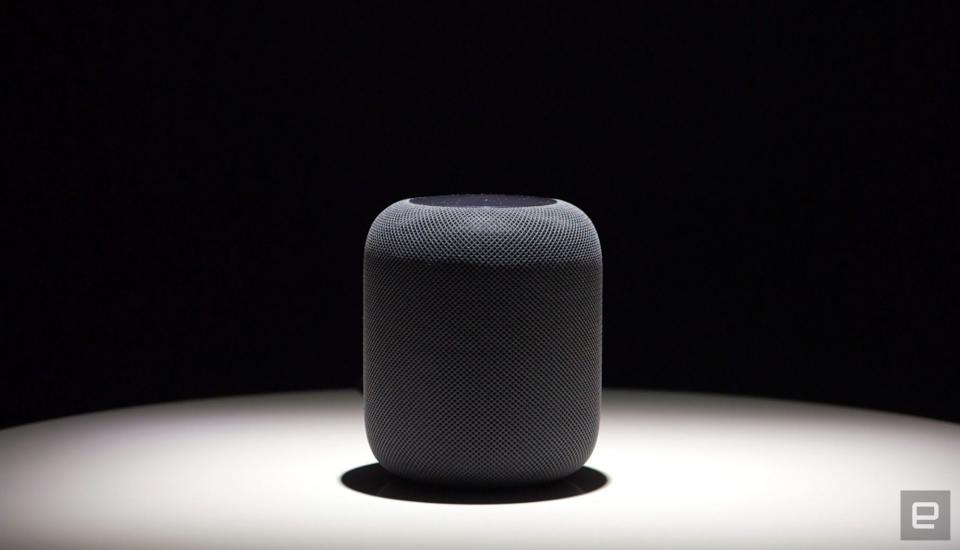What to expect at Apple's September 15th event
A new Apple Watch and iPad Air are practically a given.
It’s early September, so Apple naturally has an event planned. But thanks to the coronavirus, next Tuesday’s event is going to be a little weird. Like WWDC, next week’s event will be virtual and (presumably) pre-recorded. More significant, though, is that Apple has already admitted it will be launching its next generation of iPhones later than usual. That means this will likely be Apple’s first September event without a new iPhone since the tradition started with the iPhone 5 in 2012.
So, this event should be more low-key than usual, but there will still be plenty of news on tap. Here’s what the rumors and recent history suggest we’ll see.
Apple Watch updates

The tag line for Tuesday’s event is “time flies,” which almost certainly is a nod to a new Apple Watch. The timing certainly fits, as Apple has introduced a new Watch at its September events since 2016. This year, the rumor mill indicates we’ll see two new models: a high-end Series 6 as well as a more affordable option to replace the aging Series 3 Apple has been selling since 2017.
There aren’t a ton of details out there regarding what will make the Series 6 stand out from its predecessor, though. Apple is adding sleep-tracking features to watchOS 7, so there may be some hardware enhancements to make that more accurate than it’ll be on past models. Apple may have made some battery life improvements, as well, something that could be crucial for sleep tracking. Physically, the Series 6 is expected to be essentially identical to the current model. That’s not terribly surprising: as someone who wears a Series 5 every day, I can say there isn’t a whole lot I’d change in that department.
One thing that’s notable about the Series 6 is something it takes away: Force Touch. This is Apple’s term for the pressure-sensitive display and gestures found on every Apple Watch to date. If you press down harder on the screen, some apps will pop up with hidden menu options; if you press firmly on the watch face, for example, it’ll bring up a list of all your watch faces you can swipe through. If this sounds familiar, it’s because the iPhone had a similar feature called 3D touch for a few years before Apple gave up on it in favor of “haptic touch,” which brings up a menu after you press and hold. Force Touch has been removed entirely from watchOS 7, so even owners of older watches will need to adapt.
As for the cheaper watch, we don’t know a ton about it yet either. At the very least, though, it’s safe to assume Apple will put a newer processor in it, as the chip inside the Series 3 is definitely showing its age at this point. Whether Apple moves to the larger, edge-to-edge display it first included in the Series 4 remains to be seen, but we’re guessing that it’ll save the always-on display features for the top-of-the-line model. Probably the most important thing about this budget watch is its price -- $200 for a Series 3 was a very good deal, giving buyers the most important parts of the Apple Watch experience at a reasonable price. I don’t expect that to change this year.
An all-new iPad Air

Apple’s mid-range tablet, the iPad Air, is a capable device that’s getting long in the tooth. According to various leaks and rumors we’ve seen, Apple is giving it a major design upgrade this year. Most notable is that it’ll take on a similar appearance to the iPad Pro with much thinner bezels and no home button. That means room for a bigger display, though it’s not clear yet if it’ll be as large as the 11-inch iPad Pro. Earlier in the year, reliable Apple analyst Ming-Chi Kuo said the company was working on a 10.8-inch iPad, but it wasn't clear if this was for the entry-level iPad or the Air. That said, a 10.8-inch screen makes sense for the Air -- Apple could use the same basic body style as the 11-inch iPad Pro, just with bigger bezels on the less expensive device.
While the new iPad Air might have a design similar to the iPad Pro, it definitely won’t get all of its headlining features. Specifically, it looks like Face ID won’t be included; instead, a leaked manual appears to show Touch ID authentication built into the iPad’s power button. This would be a first for Apple, but plenty of companies have built fingerprint sensors into thin and long buttons like this before. This means the iPad Air won't have the same TrueDepth camera array found on the front of the iPad Pro.
Chances are good it’ll also have a more modest one-camera setup on the back, compared to the two-camera and LiDAR sensor found on the Pro. As for features making their way from the Pro to the Air, rumors indicate that both the USB-C port and magnetic Smart Connector will be present here — which means the new iPad Air could work with the wildly expensive but excellent Smart Keyboard.
Finally, we don’t know what the price will be here, but it’s a safe guess that Apple will keep the cost at $500 despite the big hardware changes. As for what processor will be on the inside, an update from 2018’s A12 to 2019’s A13 seems like a safe bet.
Updates on iOS 14, iPadOS, watchOS 7 and maybe macOS Big Sur

Even though new iPhones aren’t expected for another month or so, it seems likely we’ll get updates on all of Apple’s upcoming software releases. According to Bloomberg’s Debby Wu and Mark Gurman, iOS 14 is still expected to hit iPhones this month. And if we get a new iPad, it would only make sense for details about the next iPadOS to be announced as well. Given the fact that iOS and iPadOS are still quite closely linked, both updates should drop around the same time. They have some pretty significant new features, too, including resizable widgets, a new App Library organization system for the iPhone, major updates to Messages, searchable handwriting on the iPad and much more.
Given that Apple is all but certain to announce a new Watch, we should also find out when watchOS 7 will roll out. Typically it arrives along with new hardware, so we should see it this month as well. As mentioned, watchOS 7 will add sleep tracking features to the Apple Watch for the first time. It’ll also include a handful of new watch faces, the ability for apps to include multiple complications, revamped workout and activity apps, a hand-washing app (yup) and a handful of other refinements.
Apple doesn’t typically spend much time on the Mac at these September events, but it’s possible we get an update on when Big Sur will arrive. Last year, Apple announced macOS Catalina availability via a press release in early October, so it’s just as likely they take that route again. But after using the public beta for the last month-plus, it does feel almost ready to go.
An Apple subscription bundle
Ever since Apple announced News+, TV+ and Arcade all in one shot at a services-focused event in 2019, people have speculated that the company would bundle all them together alongside Apple Music. It hasn’t happened yet, but it could be announced next week -- Bloomberg reported that an Apple One subscription bundle would be ready this fall along with new iPhones. That means Apple might sit on it for another month or so, but it’s not hardware-dependent, so it could easily be previewed at next week’s event.
A new HomePod or AirPods

File these lower on the certainty list, but Bloomberg has reported multiple times that a smaller, cheaper HomePod would be released this fall. The original is starting to show its age, and though it sounds excellent for its price, a $300 speaker is still a tough sell for a lot of people. Combined with the fact that Apple has some much-needed software improvements on the way (like letting the HomePod work with music services besides Apple Music) and the timing for a new speaker does make sense.
As for headphones, rumors have swirled about an Apple-branded, over-the-ear headset for a long time now. Bloomberg again seems to think that they’ll be ready for the fall, but there haven’t been many corroborating leaks. Apple’s success with the AirPods lineup makes an expansion of its headphone offerings likely -- whether we see them next week is another story.
